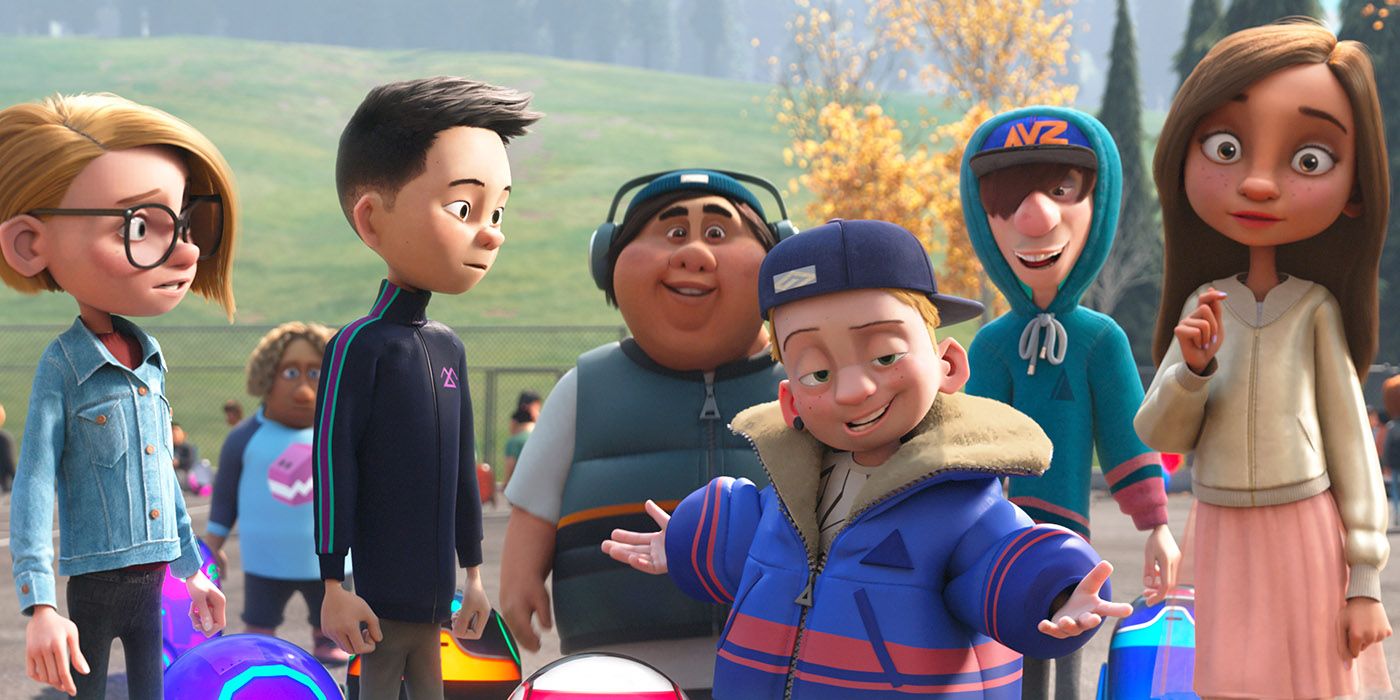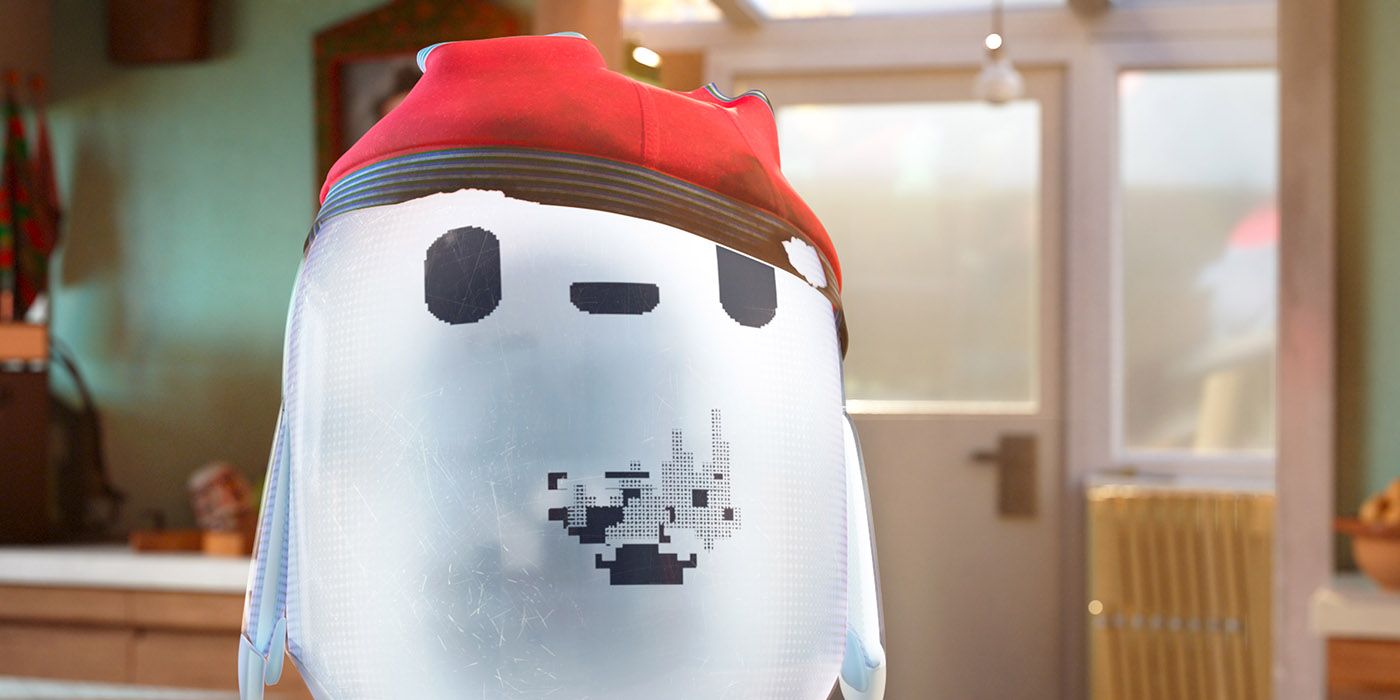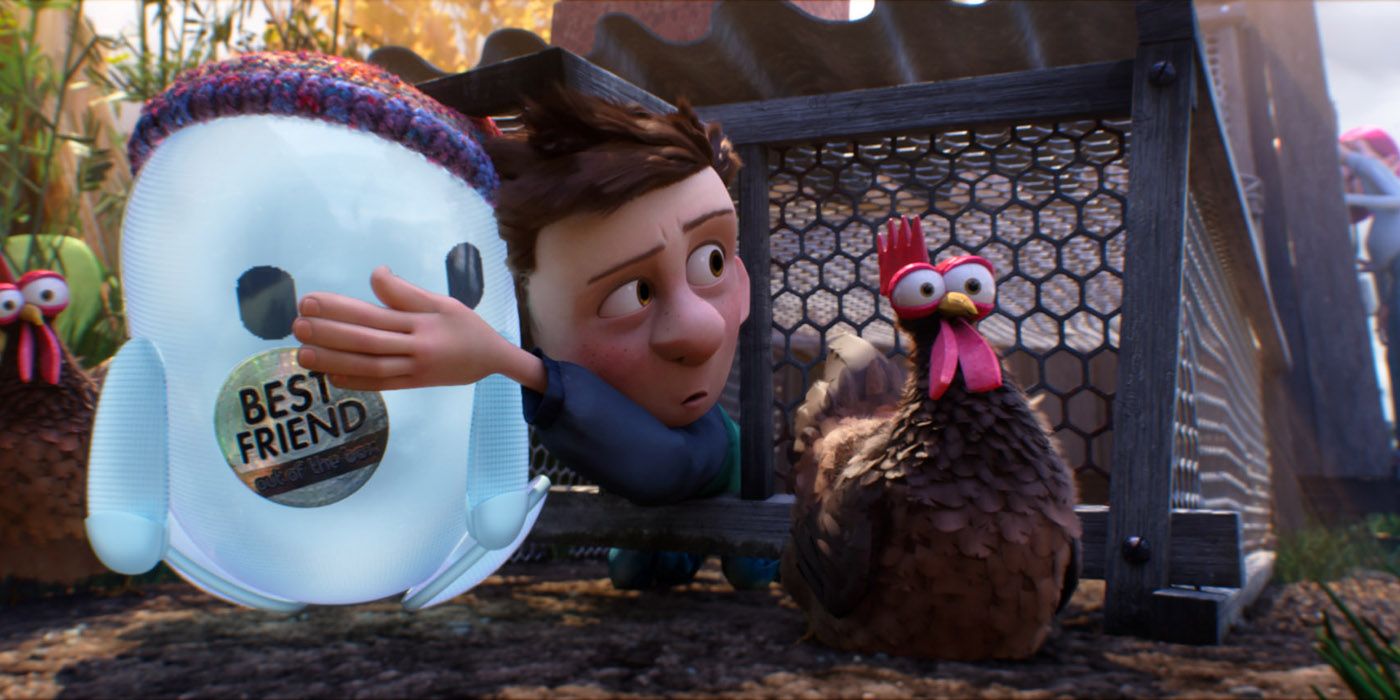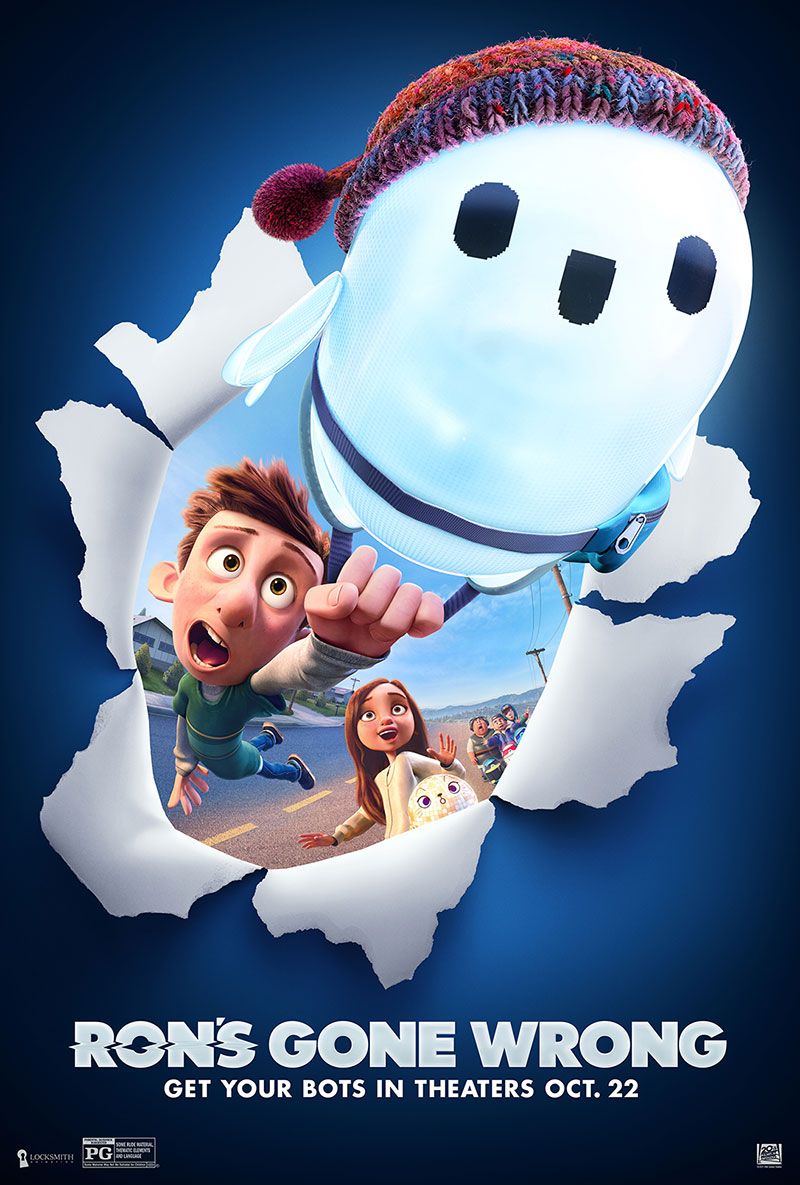Ron's Gone Wrong, a new animated comedy from 20th Century Studios and Locksmith Animation, arrives in theaters on October 22. In the age of social media, a tale about a boy without a stable internet connection may be timelier than ever, and the bond he forms with his B-Bot (AKA his "Best Friend Out of The Box") feels more believable.
Screenwriter and director Sarah Smith (Arthur Christmas) joined forces with writer Peter Baynham (Borat) to craft the story of young Barney's (Jack Dylan Grazer, Shazam!) despairs over being the only kid at school without the latest friend-making technology. To spare him future recesses with no one talk to, online or off, his well-meaning family gift him a robot named Ron (Zach Galifianakis, A Wrinkle in Time) who winds up bringing more trouble for Barney - but also offers a path to true friendship.
Director Jean-Philippe Vine and co-director Octavio E. Rodriguez, who have previously worked on Pixar productions such as The Good Dinosaur and Coco respectively, spoke to Screen Rant about the teamwork and inspirations behind the whimsical animated adventure.
Screen Rant: At what point in the early stages were you brought on board, and what was it about the concept that intrigued you most?
Jean-Philippe Vine: I was brought on after hearing a pitch, when it was kind of still in outline phase, a pitch by Sarah Smith. She'd already been working on it with Peter Baynham.
And it just really resonated with me, in terms of the big-hearted adventure aspect of the boy and his dog kind of story. But at the same time, as a parent, it really resonated with me in terms of the thematics. Because we're all trying to figure out how our children are doing, and how they're dealing with their sense of themselves when their life is filtered through social media.
Octavio, I know this is your first time working as co-director on a full-length feature film, but you have done plenty of work in animation before. What was that leap like, and how were you prepared to take on this new role?
Octavio E. Rodriguez: Fortunately, we had the people that we had around us, and also working with J.P. at Pixar pretty much helped me be in that realm. But at the same time, it's something where you don't have all the answers. And luckily, you can work with the people around you to kind of help you out to build from that because it's a whole new level of managing.
Also trying to figure out, "What is there to unearth within the story?" Because that's something that we always were like, "Okay, we have this movie, we have all these people, and we're making this story. But how do we keep it so that it's what got us inspired at the very beginning when we read the script?" I feel like it's an ongoing process; I'm still learning and still growing, and I want to keep welcoming that. It's not having all the answers, but just trying to keep [moving] forward and be ready for anything.
I love the complicated theme of Ron being a true friend and someone that you need but, at the same time, social media not being a true friend and technology not being something you can rely on solely. How do you balance the real human connections that one would hope Barney searches out and the pure friendship that Ron provides?
Jean-Philippe Vine: What we're really looking at in terms of the social media aspect is how it can affect our sense of self. And in a way, social media can often just be a mirror back to us, because it's kind of providing all these metrics about how popular we are. Which is really tough, and I don't think children should be dealing with that kind of pressure. Because being a kid is difficult - being anyone is difficult, because we're all trying to figure it out.
Our most important thing was to have Barney go through this journey, where he starts feeling like he is the one outsider. He's the one kid that doesn't have it all together, and he's partnered with the worst possible B-Bot, which makes it even worse. It makes him feel even more of an outsider. But in fact, that's where the adventure kind of comes out of, their relationship. They build this crazy model of a friendship when Barney tries to teach him what a friend is, and it's really fun for the audience to follow Ron doing that.
But then Ron develops his ways of challenging that, and that's exactly what a good friend does. They challenge you, they encourage you, they push you to new things, and there's that mutual trust there.
How much control did you have over all the details of the B-Bots? Because there are so many options and designs. How much was your brainstorming versus animators coming in and being like, "We're gonna add this?"
Octavio E. Rodriguez: I think, for us, it was one of the things where we wanted to get this personal experience for the user interface with the kids, and each one had a different idea about what that is. But at the same time for the animators, we wanted them to go for it and bring something and challenge us and ask these questions about, "Can we try this? Can we try that?" and push the limits of animation. Which they did.
But I think it was a nice collaboration of both from us and from what the animators brought.
J.P., I believe you said that you were inspired by the film Her, at least thematically speaking. How did you guys boil that down to make it palatable for children?
Jean-Philippe Vine: The thing about Her, and in fact me using Siri or Alexa these days, is that its sort of become seamless; it's become effortless. I still talk to Siri a lot when I need to know what time it is and what the temperature is. But the way tech is going, it's only going to become more seamless, because of all the information that is being essentially collected about us.
And we just wanted to lift the curtain a bit on that. Some kids may not know what we're saying - they may just be enjoying the story - but we wanted to gently go, "Well, there's an algorithm here, and it's adding labels to the things that you're doing." And then potentially, it's a question of whether you want that. Hopefully, maybe even a couple of years down the line, a kid would go, "Yeah, Ron's Gone Wrong kind of gave me a perspective on the devices I use and how I use them." That was kind of our way of thinking about it.
When I spoke to Jack Dylan Grazer, he talked about having worked on the film for five years and starting when he was 13. I'm sure it went through many stages, but were there any storytelling avenues that you guys had to balance out or get rid of? How much did the story evolve from when you came on?
Octavio E. Rodriguez: From when I came on, and before that, the story was pretty much what the core was. And a lot of what we were trying to figure out was the best parts of the pitch that we had gotten from the story.
For example, the idea of the whole thing in the yard with Ron and Barney, and him bringing all these friends to them. At one point, we actually had it over in the shed in the back in the backyard. But we felt like it was a better place to put it in the school because it's where Barney would dread it the most. Those kinds of things are what made us figure out how can we keep pushing but stay within the foundation of this story.
Because we really believed in what this message is, which is, "What is a true friendship?" And also, for kids in general dealing with the balance of maneuvering through social media and social networks. So, a lot of it was just pushing and trying to plus what we already had.
Ron's Gone Wrong opens October 22 in theaters.




